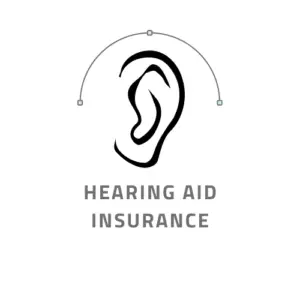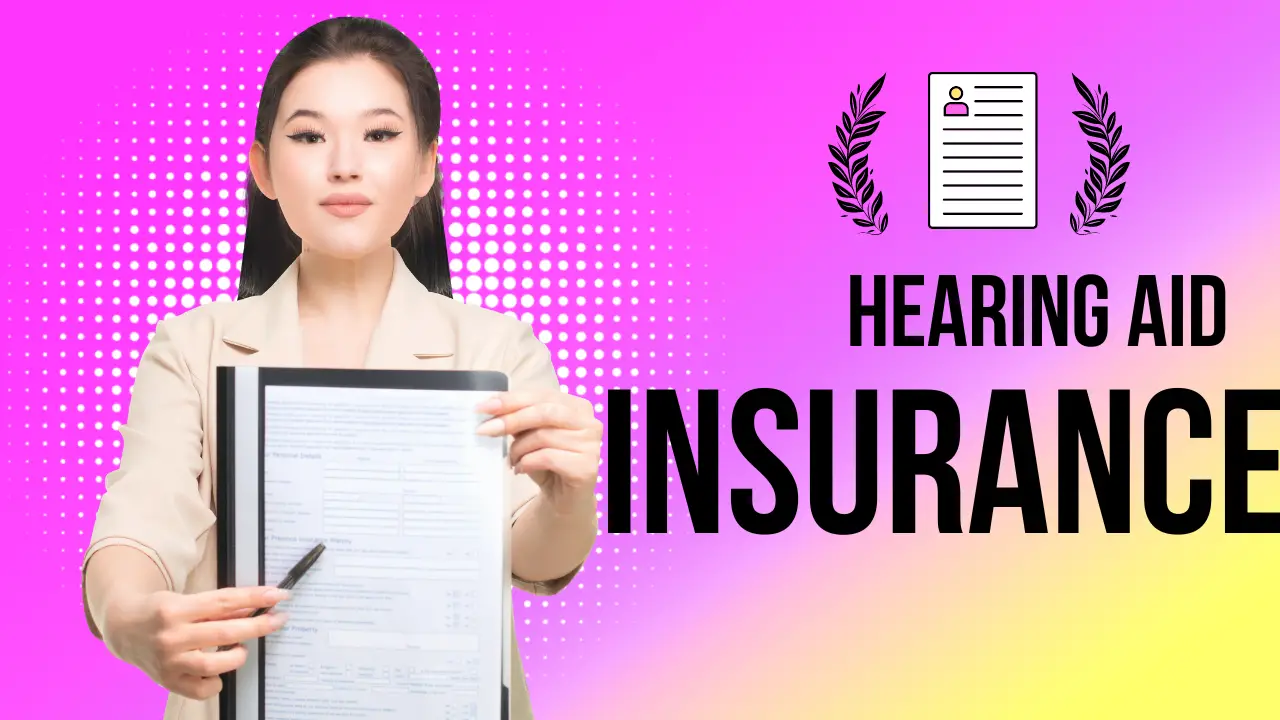Struggling with hearing loss but worried about the cost of hearing aids? Hearing Aid Insurance can be your key to clearer communication and a richer life. Discover different coverage options, understand limitations, and learn how to maximize your benefits. Explore tips for documentation, advocacy, and navigating the insurance process. Invest in your hearing, invest in your well-being. Start your journey to better hearing today!
Introduction to Hearing Aid Insurance

Many people underestimate the impact of hearing loss on their daily lives. From missed conversations to feelings of isolation, untreated hearing loss can significantly affect your quality of life. While hearing aids can make a world of difference, their high cost can often be a barrier. This is where hearing aid insurance comes in.
Understanding Hearing Aid Insurance:
Hearing aid insurance is a specific type of coverage that helps offset the cost of purchasing and maintaining hearing aids. Unlike standard health insurance, which rarely covers hearing aids, this specialized coverage can provide several benefits, including:
- Financial assistance: Reduce the out-of-pocket expense associated with hearing aids, making them more accessible.
- Coverage for repairs and replacements: Protect your investment with coverage for unexpected repairs or replacements.
- Access to advanced features: Some plans offer coverage for advanced features like Bluetooth connectivity or rechargeable batteries.
- Peace of mind: Knowing you have coverage can ease the stress associated with hearing aid costs.
Understanding the Cost of Hearing Aids
Hearing aids are more than just devices; they’re gateways to improved communication, social engagement, and overall well-being. But let’s face it, the price tag can be daunting. Let’s break down the costs associated with hearing aids and shed light on why hearing aid insurance plays a crucial role in making them more accessible.
Breakdown of Hearing Aid Expenses:
- Initial purchase: Costs range widely depending on technology, features, and brand. Basic models start around $1,000 per ear, while premium options can reach $6,000 or more.
- Fitting and adjustments: Expect additional fees for professional evaluation, fitting, and fine-tuning to ensure optimal performance.
- Batteries and accessories: Depending on the type, batteries need regular replacement, and additional accessories like chargers or cleaning kits add to the expense.
- Repairs and maintenance: Over time, repairs or replacements may be needed due to wear and tear or technological advancements.
The Burden of Affordability:
These combined costs can create a significant financial barrier, especially considering:
- Multiple hearing aids: Most people require a hearing aid for each ear, doubling the expense.
- Long-term investment: Hearing aids have an average lifespan of 5-7 years, requiring future replacements.
- Lack of standard insurance coverage: Traditional health insurance rarely covers hearing aids, leaving the full cost on individuals.
Insurance as a Game Changer:
This is where hearing aid insurance steps in, offering much-needed relief:
- Reduced upfront costs: Plans typically cover a portion of the purchase price, making high-quality hearing aids more attainable.
- Coverage for fittings and adjustments: Many plans reimburse or contribute to fitting and adjustment fees, ensuring optimal performance without adding financial burden.
- Protection against future costs: Some plans cover repairs, replacements due to normal wear and tear, or even upgrades to newer technology.
- Peace of mind: Knowing you have coverage can alleviate the stress associated with unexpected hearing aid expenses.
Beyond affordability, insurance offers:
- Access to hearing healthcare professionals: Some plans offer access to a network of audiologists for consultations and fittings.
- Greater choice and control: Coverage empowers you to choose the hearing aids that best meet your needs and budget.
Investing in your hearing health through hearing aid insurance isn’t just about affordability; it’s about prioritizing your well-being, communication, and quality of life. In my next comment, we can delve into different types of hearing aid insurance, tips for choosing the right plan, and resources to navigate the process.
Types of Hearing Aid Insurance Plans
With the understanding of hearing aid costs and the importance of insurance, let’s explore the different types of coverage available:
1. Private Insurance:
- Offered by individual health insurance companies or employer-sponsored plans.
- Coverage varies widely, with some plans offering limited benefits (e.g., discounts) and others providing more comprehensive coverage.
- Check your plan details carefully to understand the extent of coverage, including:
- Percentage of purchase price covered.
- Coverage for fittings, adjustments, and repairs.
- Maximum annual benefit amounts.
- Network restrictions on providers.
2. Medicare/Medicaid:

- Medicare: Generally, Original Medicare (Parts A & B) does not cover hearing aids.
- Medicare Advantage (Part C): Some private Medicare Advantage plans offer hearing aid coverage as an optional benefit. Check your specific plan details.
- Medicaid: Coverage varies by state but generally covers hearing aids for children under 21 under the Early and Periodic Screening, Diagnostic, and Treatment (EPSDT) program. Eligibility for adults varies from state to state.
3. Government Programs:
- Veterans Affairs (VA): Provides hearing aids and related services to eligible veterans with service-connected hearing loss.
- State Vocational Rehabilitation Programs: May offer financial assistance for hearing aids if they impact your ability to work.
- Manufacturer Rebates and Financing: Some hearing aid manufacturers offer rebates or financing options, which can further reduce costs.
Comparing Options:
Choosing the right plan depends on your individual needs and budget. Here’s a quick comparison:
| Feature | Private Insurance | Medicare/Medicaid | Government Programs |
|---|---|---|---|
| Eligibility | Varies by plan | Varies by program | Varies by program |
| Coverage | Varies, from discounts to comprehensive coverage | Limited (Medicare Advantage only) | Varies by program, often children only |
| Cost | Premiums and cost-sharing | Variable | Often income-based |
| Network restrictions | May apply | Not applicable | Not applicable |
Important Points:
- Do your research: Carefully compare plans, including coverage details, costs, limitations, and network restrictions.
- Talk to your doctor or audiologist: They can help you understand your hearing needs and recommend suitable insurance options.
- Consider your budget: Calculate the total cost of hearing aids with and without insurance to make an informed decision.
Coverage Criteria and Limitations
Now that you’re familiar with various insurance options, let’s delve into the specifics of coverage criteria and limitations:
Factors Influencing Coverage:
Insurance plans use several criteria to determine coverage eligibility and extent:
- Age: Many plans exclude adults unless they meet specific criteria like significant hearing loss impacting daily life.
- Hearing loss severity: Coverage might be based on decibel level or functional limitations caused by hearing loss.
- Medical history: Pre-existing conditions affecting hearing, ear infections, or surgeries might influence coverage.
- Plan type: Individual plans and employer-sponsored options often differ in coverage details.
- State regulations: Different states have varied mandates for insurance companies regarding hearing aid coverage.
Common Limitations:
Understanding these limitations helps you manage expectations and choose the right plan:
- Age restrictions: Most plans exclude adults, focusing on children with hearing loss impacting education or development.
- Coverage caps: Plans often have annual or lifetime limits on the amount they contribute towards hearing aids.
- Specific models covered: Some plans might restrict coverage to specific brands or models within a price range.
- Exclusions: Certain types of hearing aids, features, or services might be excluded from coverage (e.g., advanced features, repairs).
- Network restrictions: Certain plans might require using providers within their network for coverage.
Important Tips:
- Read the fine print: Carefully review your insurance plan documents to understand specific coverage details, limitations, and exclusions.
- Ask questions: Don’t hesitate to contact your insurance provider or audiologist for clarification on coverage specifics.
- Compare plans: If possible, compare different plans to find one that best meets your needs and budget.
- Consider additional costs: Factor in costs not covered by insurance, like batteries, accessories, and maintenance.
Remember: I cannot provide specific advice on individual plans or eligibility. However, by understanding these factors and limitations, you can make informed decisions when choosing your hearing aid insurance and navigating the coverage process.
How to Find Insurance Coverage for Hearing Aids
Now that you have a solid understanding of hearing aid insurance options and considerations, let’s explore ways to find the plan that best suits your needs:
Researching Your Options:
- Start with your current insurance: Check your plan documents and contact your provider to understand any hearing aid coverage offered.
- Explore online resources: Use reputable websites like:
- Hearing Loss Association of America: https://www.hearingloss.org/
- AARP: https://www.aarp.org/health/conditions-treatments/hearing-resource-center/
- National Institute on Deafness and Other Communication Disorders: https://www.nih.gov/about-nih/what-we-do/nih-almanac/national-institute-deafness-other-communication-disorders-nidcd
- State insurance commissioner websites: Look for information on state mandates for hearing aid coverage.
- Compare private insurance plans: Utilize online comparison tools or consult with an insurance broker to compare benefits, costs, and limitations.
- Consider government programs: Check eligibility for programs like Veterans Affairs or state vocational rehabilitation services.
Navigating Insurance Websites and Providers:
- Utilize plan search tools: Many insurance companies offer search tools on their websites to find plans with hearing aid coverage.
- Call your insurance provider: Speak directly to a representative for clarification on your specific plan details and network restrictions.
- Contact audiologists: Ask about their experience with different insurance plans and any network affiliations they hold.
- Seek help from advocacy groups: Organizations like the Hearing Loss Association of America can offer guidance and support.
Tips for Selecting the Right Plan:
- Prioritize needs over features: Focus on coverage for essential hearing aid costs rather than solely on advanced features.
- Consider out-of-pocket expenses: Factor in uncovered costs like batteries, repairs, and co-pays to determine the total financial commitment.
- Read reviews and compare networks: Look for user experiences and ensure providers in your area are included in the network.
- Don’t hesitate to ask questions: Clarify any doubts you have with providers or insurance representatives before enrolling.
Additional Resources:
- Hearing Loss Association of America Helpline: 1-800-787-3234
- National Institute on Deafness and Other Communication Disorders Contact Center: 1-800-232-4643
- State Health Insurance Assistance Programs (SHIPs)
Case Studies or Personal Experiences
Investing in hearing aids is an investment in your well-being. But let’s not sugarcoat it, the high cost can be a deterrent, leaving many with untreated hearing loss and its negative consequences. This is where hearing aid insurance comes in, playing a key role in unlocking the advantages of improved hearing:
1. Overcoming the Financial Barrier:
- Reduced upfront costs: Insurance plans typically contribute a portion of the purchase price, making high-quality hearing aids more attainable. Imagine going from a hefty sum to a manageable down payment, opening doors to better technology and improved sound quality.
- Spread out costs: Some plans offer financing options, allowing you to spread the cost over months, making it easier to budget and prioritize your hearing health.
- Coverage for ongoing expenses: Batteries, repairs, and adjustments can add up. Insurance coverage for these expenses eases the financial burden and ensures consistent, optimal performance of your hearing aids.
2. Improved Access to Quality Care:
- Network of audiologists: Some plans grant access to a network of qualified audiologists, often at discounted rates. This means convenient access to experienced professionals who can guide you through the selection and fitting process.
- Peace of mind: Knowing you’re covered can alleviate stress and anxiety associated with unexpected hearing aid expenses, allowing you to focus on enjoying the benefits of improved hearing.
- Greater choice and control: Insurance empowers you to choose the hearing aids that best suit your needs and budget, without solely relying on out-of-pocket affordability.
Examples of Improved Lives:
- Imagine confidently engaging in conversations, no longer struggling to catch every word or needing others to repeat themselves.
- Picture yourself actively participating in social gatherings, enjoying the nuances of conversations and laughter shared with friends and family.
- Envision feeling safe and secure, being alerted to environmental sounds like traffic or alarms thanks to your well-functioning hearing aids.
Hearing aid insurance isn’t just about finances; it’s about investing in your overall well-being, social connections, and quality of life. By reducing financial barriers and granting access to quality care, it empowers you to embrace the benefits of improved hearing and unlock a world of possibilities.
Tips for Maximizing Insurance Benefits
Having hearing aid insurance is a great step, but understanding how to fully utilize its benefits can make a world of difference. Here are some tips to get the most out of your coverage:
1. Know Your Plan Inside Out:
- Deep dive into your plan documents: Understand coverage details, limitations, exclusions, pre-approval processes, and claim filing procedures.
- Ask questions: Don’t hesitate to clarify any doubts with your insurance provider or audiologist. Knowledge is power when navigating coverage.
2. Document Everything:
- Maintain detailed records: Keep receipts, invoices, audiologist reports, and claim forms meticulously organized for easy retrieval.
- Capture pre-approvals in writing: Get written confirmation for any pre-approval requirements to avoid claim delays or denials.
3. Advocate for Coverage:
- Understand pre-authorization criteria: If pre-approval is required, ensure your audiologist documents the medical necessity of your chosen hearing aids.
- Negotiate if possible: Depending on your plan and state regulations, some negotiation room might exist, especially for repairs or out-of-network services.
4. Explore Network Benefits:
- Utilize in-network providers: This often simplifies claim processing and reduces potential out-of-pocket costs.
- Research network audiologists: Look for providers with experience in your specific hearing needs and insurance plans.
5. Leverage Additional Resources:
- Seek guidance from advocacy groups: Organizations like the Hearing Loss Association of America offer support and advice on navigating insurance systems.
- Consider financing options: Some manufacturers or clinics offer financing plans to help manage costs within your budget.
- Explore government programs: If your insurance coverage is limited, check eligibility for programs like Veterans Affairs or state vocational rehabilitation services.
6. Be Proactive and Stay Informed:
- Regularly review your plan: Stay updated on any changes to coverage details, network providers, or claim procedures.
- Don’t wait until the last minute: File claims promptly after receiving services to avoid processing delays.
- Communicate actively: Maintain open communication with your insurance provider, audiologist, and any other involved parties to ensure smooth claim processing.
Conclusion and Next Steps
Living with untreated hearing loss can significantly impact your quality of life. While hearing aids offer a powerful solution, their cost can often be a daunting barrier. This is where hearing aid insurance steps in, offering a lifeline to improved communication, social engagement, and overall well-being.
Understanding different insurance options is crucial. Private plans, Medicare/Medicaid, and government programs each have their nuances, limitations, and eligibility requirements. Age restrictions, coverage caps, and network restrictions are important factors to consider.
Maximizing your coverage involves proactive steps. Deep dive into your plan details, document everything meticulously and advocate for coverage when necessary. Utilize in-network providers, explore financing options, and leverage resources like advocacy groups for additional support.
Remember, investing in your hearing is an investment in yourself. Don’t let cost stand in the way of a richer life. Explore available options, ask questions, and choose a plan that empowers you to access the quality hearing care you deserve. Take the first step today and unlock the world of possibilities that improved hearing has to offer.
Frequently Asked Questions (FAQs)
1. Am I eligible for hearing aid insurance?
Eligibility varies depending on several factors, including:
- Age: Many plans cover children, while adult coverage is less common. Some require specific criteria like severe hearing loss impacting daily life.
- Location: State regulations influence insurance mandates for hearing aid coverage.
- Insurance type: Private plans, Medicare Advantage plans, and government programs differ in eligibility requirements.
- Pre-existing conditions: Certain conditions might affect coverage.
2. What does hearing aid insurance typically cover?
Coverage varies by plan, but it often includes:
- Partial or full purchase price of hearing aids.
- Fittings and adjustments by audiologists.
- Repairs and replacements within certain limits.
- Batteries and some accessories.
3. What are the common limitations of hearing aid insurance?
Be aware of:
- Age restrictions: Many plans exclude adults.
- Coverage caps: Annual or lifetime limits on covered amounts.
- Network restrictions: Using providers within the plan’s network.
- Specific models covered: Limitations on brands or price ranges.
- Exclusions: Certain features, repairs, or services might not be covered.
4. How do I file a claim for hearing aid insurance?
Processes vary but typically involve:
- Consult your audiologist and plan documents.
- Obtaining pre-approval (if required).
- Submitting receipts and invoices to your insurance provider.
- Paying any deductible or co-pay.
5. Where can I find more information and resources?
- Hearing Loss Association of America
- AARP:
- National Institute on Deafness and Other Communication Disorders
- State Health Insurance Assistance Programs (SHIPs)
Read More On This:

